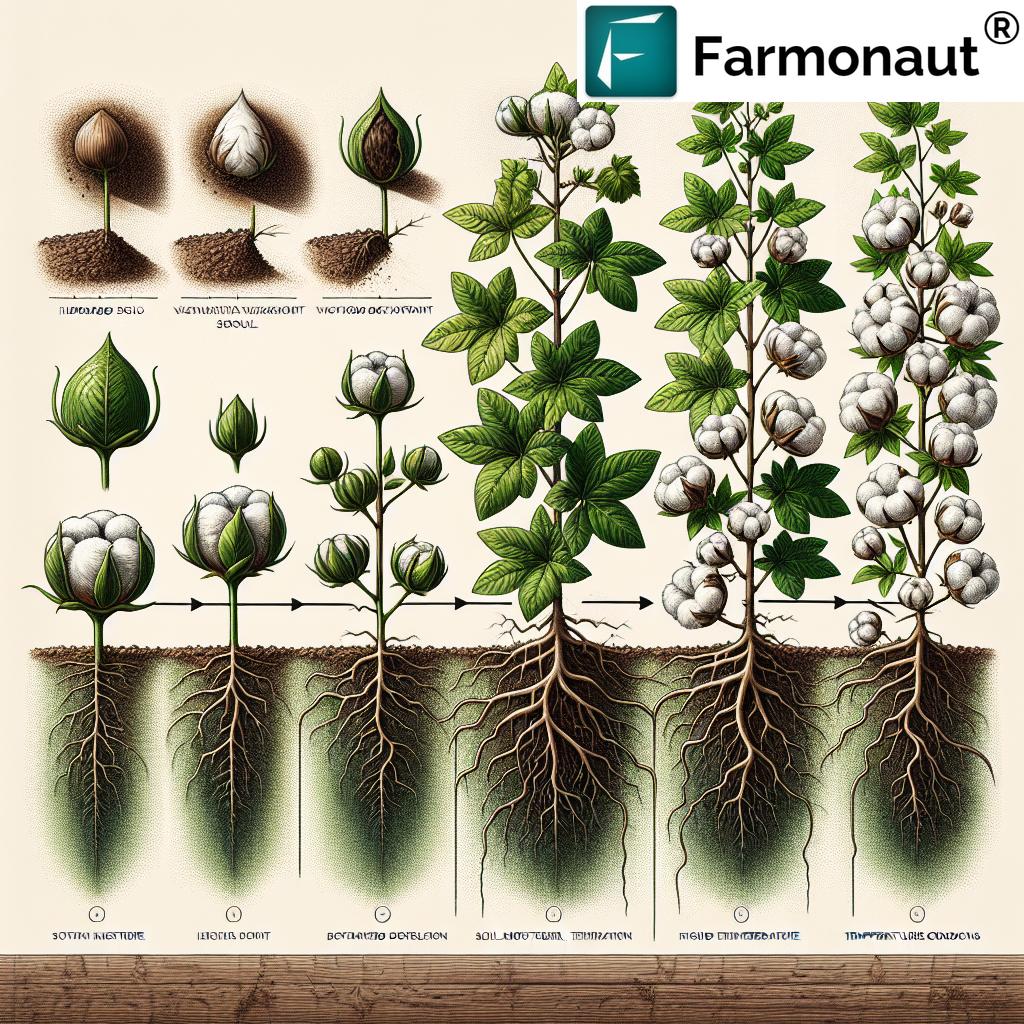Agribusiness ESG Benchmarking: Cotton Farming Trends 2025
“Over 70% of cotton agribusinesses plan to adopt ESG benchmarking to meet 2025 sustainability standards.”
Overview: ESG Benchmarking in Cotton Farming (2025)
In 2025, agribusiness ESG benchmarking has become the foundation upon which sustainable development is built in the cotton farming sector. Cotton, a fundamental yet historically complex crop, is at the intersection of agriculture, environmental stewardship, and social responsibility. Due to increasing ecological pressures, regulatory demands, and a new generation of conscious consumers, cotton agribusinesses globally are embracing rigorous ESG frameworks to rate, improve, and report on their sustainability performance.
Agribusiness ESG benchmarking uses systematic measurement and comparison to promote transparency, drive progress, and align with the UN’s Sustainable Development Goals. Within the cotton sector, this shift is reshaping environmental, social, and governance standards—affecting everything from water usage and pesticide application to labor rights and blockchain supply chain traceability.
The Growing Importance of Agribusiness ESG Benchmarking in Cotton
Cotton farming occupies a critical space in global agriculture, providing livelihoods for millions. However, it’s also associated with environmental challenges (high water, pesticide, and chemical inputs) and social complexities (labor rights, fair wages). As climate change impacts intensify and investor priorities shift, ESG benchmarking within the sector is no longer optional, but central to agricultural business viability.
- Environmental: Increasing demand for sustainable practices drives measurements of carbon emissions, water consumption, soil health, and biodiversity.
- Social: ESG benchmarking encompasses labor protections, gender equity, child labor eradication, and community investments—imperative in areas with vulnerable, seasonal labor.
- Governance: Supply chain transparency, traceability, and ethical sourcing are demanded by both regulators and consumers. Climate and social reporting fosters trust and operational resilience.
These pillars shape how companies are perceived, impacting investor appeal and amplifying competitiveness in domestic and global markets.
What Is ESG Benchmarking in Agriculture?
ESG benchmarking in agriculture refers to the systematic assessment and comparison of an agribusiness’s sustainability efforts against defined standards or similar companies in the sector. For cotton farming, this process involves:
- Collecting granular data on water efficiency, soil conservation, chemical reduction, and social outcomes.
- Using established ESG indicators and frameworks to analyze operational practices.
- Gauging progress and identifying improvement targets in sustainability initiatives.
- Reporting impacts credibly to stakeholders—including regulators, partners, and consumers.
This approach enables cotton agribusinesses to spot gaps, implement corrective actions, and demonstrate continual progress as per the expectations of 2025’s sustainable development landscape.
Key ESG Metrics and Standards in Cotton Farming
Cotton agribusinesses operate under a variety of international ESG frameworks and initiatives—each contributing to consensus on sustainability standards. The most relevant include:
- Sustainable Agriculture Initiative (SAI) Platform
- Better Cotton Initiative (BCI)
- Global Reporting Initiative (GRI)
- UN Sustainable Development Goals (SDGs)
Their benchmarks underpin compliance, shape reporting, and enable credible comparison of agricultural ESG performance. In 2025, the focus is on the following main ESG metric categories:
1. Environmental Metrics
- Water Consumption: Volume used per kilogram of cotton produced—critical given cotton’s intensive water needs.
- Pesticide and Chemical Application: Use of synthetic fertilizers, pesticide reduction, and adoption of organic or regenerative practices.
- Soil Health: Metrics like soil carbon sequestration, organic content, and erosion rates.
- Greenhouse Gas Emissions: Measurement of total farm-level carbon footprint (in tCO₂e).
- Biodiversity Preservation: Farm impact on native flora and fauna; efforts toward habitat restoration.
2. Social Metrics
- Labor Practices & Workforce Welfare: Compliance with fair wage standards, health & safety protocols, and prevention of child or forced labor.
- Community Engagement: Projects that aim at local well-being, including infrastructure, healthcare, or education.
- Gender Equity: Rates of female workforce participation and support for equal opportunity.
- Fair Trade Certifications: Achievement and maintenance of internationally recognized farm equity standards.
3. Governance Metrics
- Supply Chain Transparency: Use of blockchain technology and robust traceability systems, which Farmonaut enables, to assure authenticity and ethical sourcing throughout the cotton supply chain.
- Regulatory Compliance & Ethical Conduct: Adherence to anti-corruption measures, global conventions (e.g., UN Global Compact), and accurate ESG reporting.
- Data Reporting and Communication: Transparent, regular disclosures of ESG indicator progress—key to building stakeholder trust.
Farmonaut recognizes the critical importance of these benchmarks, offering solutions that simplify measurement and demonstrate compliance. By making satellite-powered data accessible, we enable cotton agribusinesses to effortlessly measure, report, and benchmark across these crucial ESG metrics.
“Cotton farms using ESG metrics report a 30% higher compliance rate with environmental regulations by 2025.”
Comparative Benchmark Table: Cotton ESG Performance 2025
| ESG Metric | Industry Average (2025 Estimate) | Leading Agribusiness Benchmark | Global Target/Standard |
|---|---|---|---|
| Water Usage (m³/kg cotton) | 1,650 | 1,200 | 1,100 (BCI, SAI, UN SDG 6) |
| Carbon Emissions (tCO₂e/ton cotton) | 2.6 | 1.8 | 1.4 (GRI, Paris Agreement) |
| Pesticide Use (kg/ha/year) | 5.3 | 3.0 | <2.5 (BCI, SAI Platform) |
| Labor Practices Score (1-100) | 67 | 88 | 90+ (UN SDG 8, Fair Trade) |
| Biodiversity Index | 0.41 | 0.58 | 0.60+ (GRI, SDG 15) |
Note: These 2025 estimates are illustrative and highlight how benchmarking and measurement cotton farming enables agribusinesses to assess their position against top industry performers and global sustainability targets.
The Role of Technology in Agriculture ESG Benchmarking
Technological innovation is the driving force behind transformative ESG benchmarking in 2025. Leading agribusinesses and forward-thinking farmers are leveraging advanced technologies to gather, interpret, and act on essential ESG data within the cotton sector.
Satellite-Based Crop and Soil Monitoring
- Utilizing multispectral imagery to assess crop health (e.g., NDVI) and measure real-time carbon footprinting for every field.
- Soil moisture analysis to optimize irrigation and minimize water wastage—delivering improved resource efficiency and compliance with emerging global benchmarks.
AI & Data Analytics Platforms
- Deploying artificial intelligence for anomaly detection—enabling proactive risk management in pest or drought events.
- Integrating ESG dashboard reporting, using auto-collected metrics for rapid benchmarking and peer comparison.
Blockchain for Supply Chain Transparency
- Ensuring traceability and data authentication for sustainability claims throughout the cotton value chain.
IoT Devices and Field Sensors
- Comprehensive real-time data collection on climate, soil, and input application, unifying physical and digital farming practices.
Farmonaut facilitates such technology adoption with accessible, mobile-friendly tools—via our Android, iOS, and web app platforms. This enables agricultural ESG benchmarking to scale affordably from individual farms to multi-region agribusinesses.
How Farmonaut Supports ESG Benchmarking in Cotton Agribusiness
As the pressures of 2025 and beyond intensify, we at Farmonaut are dedicated to making comprehensive ESG benchmarking accessible and actionable for cotton farmers and agribusinesses globally:
- Satellite Monitoring: Our platform transforms remote sensing into practical farming insights—delivering field-level crop health, soil moisture, and climate metrics to enable real-time decision-making (large-scale farm management).
- AI-Driven Advisory: Personalized recommendations for crop, irrigation, and input optimization—improving yield while supporting sustainability.
- Blockchain Traceability: Secure, end-to-end transparency in supplier relationships, enhancing ESG compliance and consumer trust. Learn more about blockchain product traceability.
- Resource & Fleet Management: Centralized tools for monitoring equipment and resources, supporting carbon footprint reduction and efficient logistics (fleet management use case).
- Compliance Monitoring: Features that help document ESG performance and prepare for global standards and certification audits.
- Financial Verification: Using satellite farm verification to streamline crop loans & insurance for ESG-focused farmers, enabling responsible investments and risk management.
Our subscription model is designed to match your scale and requirements—see actual pricing below:
Challenges and Opportunities in Benchmarking and Measurement Cotton Farming
While ESG benchmarking opens doors to premium markets, green finance, and enhanced risk management, cotton farming faces real-world hurdles in scaling best practice sustainability. Understanding these challenges is paramount for sector-wide progress:
Key Challenges
- Data Standardization: Variation in ESG data quality and availability (especially in regions dominated by smallholder farmers) poses obstacles to meaningful benchmarking.
- Integration Costs: Implementing state-of-the-art monitoring and reporting tools involves upfront investment and training.
- Socio-Economic Barriers: Vulnerable labor populations, including migrant workers, may face exclusion if social metrics aren’t carefully crafted for equity.
- Regulatory Fragmentation: Inconsistent local and global ESG policies complicate compliance and comparative assessment.
Emerging Opportunities
- Digital Platforms & Farmer Cooperatives: Shared investment in large-scale management solutions distributes costs and makes ESG technology accessible at every level.
- Government & Market Incentives: Policies supporting sustainable practices and rewards for high-ESG farms drive positive change.
- Premium Certification & Financing: ESG-compliant producers gain access to green funding and preferential trade terms in an increasingly competitive global cotton market.
Future Trends: Cotton Farming and ESG in 2025 and Beyond
Looking ahead, benchmark agribusiness and cotton farming sustainability will be shaped by three megatrends:
- Mandatory ESG Reporting: Governments and stock exchanges in many regions are shifting ESG disclosure from voluntary to mandatory—raising the bar for transparency, measurement, and continuous improvement.
- Consumer-Driven Traceability: End-users increasingly demand product transparency. Technologies like blockchain traceability—as powered by Farmonaut—will become prerequisites in both retail and B2B cotton supply chains.
- Automated, AI-Driven Compliance: The next generation of ESG software combines remote sensing with predictive analytics, automating most sustainability tasks, and bringing smaller producers into the sustainability fold.
In this evolving market, cotton agribusinesses that make ESG benchmarking a core pillar of their strategy—not just a compliance exercise—will emerge as credible leaders, resilient to climate and market shocks.
Useful Resources & Farmonaut Solutions
-
Get farm-level ESG insights instantly with our web application:

-
Download Our Mobile Apps:


-
Integrate ESG data into your systems via Farmonaut Satellite & Weather API
– Ideal for researchers, tech companies, and large agribusinesses integrating environmental benchmarking at scale. API Developer Documentation
-
Explore focused Farmonaut product solutions:
- Carbon Footprinting for Cotton Farms: Real-time GHG measurements to help companies reduce emissions and certify sustainable practices.
- Blockchain-Based Product Traceability: Transparent supply chain tracking to verify sourcing and enhance trust.
- Crop Loan and Insurance via Satellite Verification: Support ESG-compliant financial solutions for cotton farmers and agribusinesses.
- Fleet & Resource Management Tools: Achieve operational efficiency and minimize emissions related to logistics.
- Large Scale Farm Management Platform: Farm monitoring, multi-site benchmarking, and compliance tools—all at your fingertips.
FAQ: Cotton Farming & ESG Benchmarking (2025)
What is agribusiness ESG benchmarking in cotton farming?
Agribusiness ESG benchmarking involves systematically measuring, assessing, and comparing cotton agribusinesses’ environmental, social, and governance performance using established industry standards. It covers everything from water and chemical use to labor rights, supply chain transparency, and carbon footprint measurement.
Why is benchmarking and measurement cotton farming crucial in 2025?
In 2025, regulator and consumer demands for sustainable, ethical products have increased. ESG benchmarking helps cotton producers prove compliance, access green finance, enter premium markets, and continually improve their social and environmental impact.
Which technological solutions aid in cotton ESG benchmarking?
Satellite-based farm monitoring, AI analytics platforms, and blockchain traceability systems enable efficient data collection, reporting, and supply chain transparency. Farmonaut’s platform makes these innovations accessible to farms of all sizes.
How can small cotton farmers participate in global ESG standards?
By joining digital cooperatives and leveraging affordable precision agriculture platforms (like Farmonaut’s), small farmers can benchmark their ESG performance alongside industry leaders and secure access to certified markets and financial incentives.
What are the leading global ESG benchmarks for cotton farming?
Key benchmarks include the Better Cotton Initiative (BCI), Sustainable Agriculture Initiative Platform (SAI), Global Reporting Initiative (GRI), and the UN’s Sustainable Development Goals targeting water, climate, labor, and biodiversity.
How do I get started with benchmarking my cotton farm’s ESG performance?
Start by collecting water, chemical, soil, emissions, and labor data. Use digital tools (such as the Farmonaut app) to monitor, benchmark, and report your progress according to global standards.
Which ESG metric is hardest to meet in the cotton sector?
Historically, significant challenges have included reducing irrigation water usage and limiting pesticide application without affecting yields. Technology and data-driven benchmarking are closing these gaps as we move through 2025 and beyond.
Conclusion: Benchmark Agribusiness for a Sustainable Cotton Future
As pressures mount and sustainability becomes the norm, agribusiness ESG benchmarking is the strategic imperative in cotton farming. Those companies and farmers who adopt rigorous benchmarking—leveraging technology, data, and transparent reporting—will reduce environmental impact, improve social standing, and excel in global markets.
With real-time, actionable insights powered by satellite imagery, AI advisors, and blockchain traceability, platforms like Farmonaut are making agriculture ESG benchmarking accessible and affordable for all. As a result, the cotton sector is now poised to meet 2025’s high standards, ensuring resilience, brand trust, and a sustainable path forward for generations to come.
Start benchmarking your cotton operation today—join us on the journey to a responsible, thriving agricultural future!








